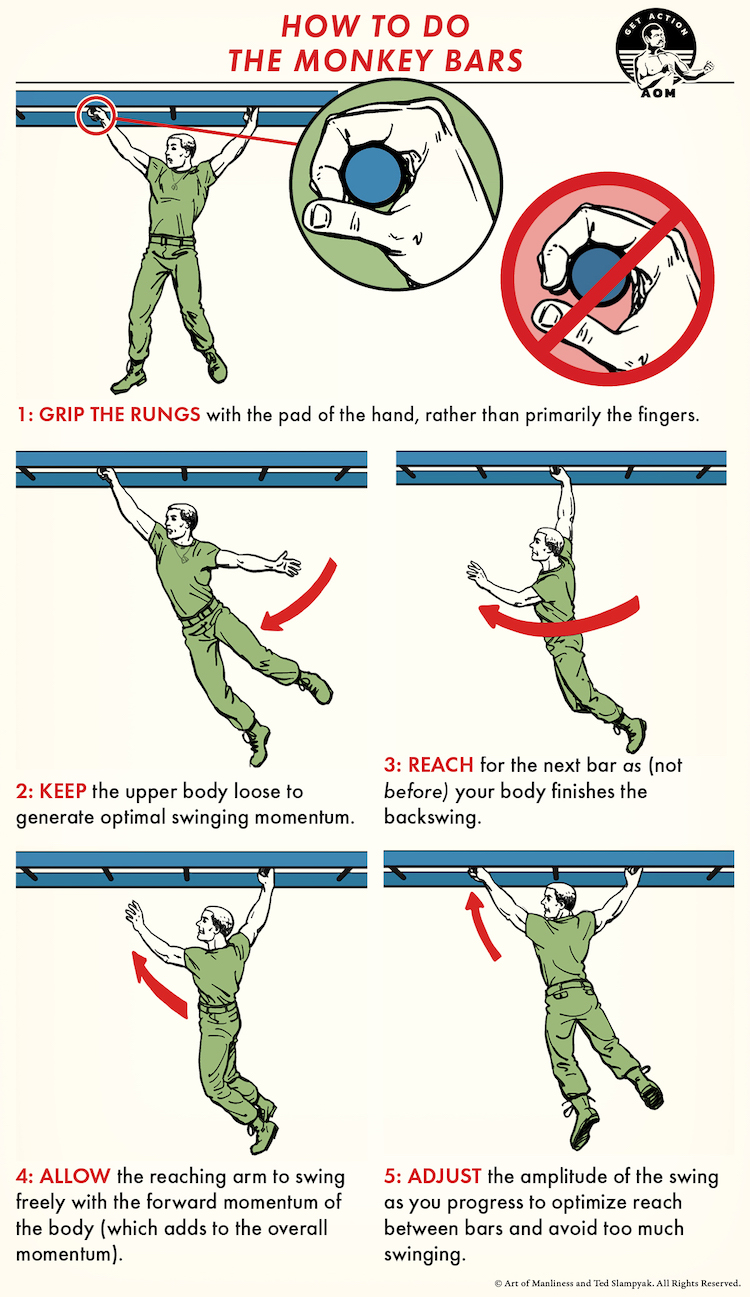
When you attempt to do the monkey bars, after taking an extended post-childhood hiatus from the practice, you’re apt to think one thing:
“$@%#! This feels awful!”
That terrible feeling is partly due to the fact that your arms have to support a lot more weight than they did when you were seven.
It’s also due to the fact that you probably don’t do much hanging as part of your fitness routine (if you even have a fitness routine).
It’s worth getting over this shock to the system though, and tackling the monkey bars more regularly. As an exercise that works your shoulders, back, arms, core, and grip strength, as well as your agility, there’s a reason the monkey bars are a standard fixture in both military and civilian obstacle courses.
To make it across the monkey bars at all, you’re going to need a baseline of strength. General strength exercises like pull-ups will help get you there, but don’t ignore working on your grip strength; often the reason someone falls off the bars prematurely isn’t because their arms aren’t strong enough, but because their grip strength isn’t adequate. You can find a guide to strengthening your grip here.
Beyond general strength, traversing the monkey bars more comfortably and efficiently requires working on some foundational movements, as well as your technique.
On the former front, you’re going to want to start hanging on the regular, and Danny Clark, Master Instructor for MovNat, recommends these exercises in particular:
Upward Reaching (focus on allowing the shoulders to flex fully instead of compensating with spinal extension)Side Hang (minimize “arching” the back and grip the bar with the pad of the hand; work up to at least 45 seconds)Scapular Pull (work up to 5 reps)When it comes to technique, there are a few different ways to traverse the monkey bars. There’s the swide swing, where your body is perpendicular to the bars and your palms are facing each other; this approach can sometimes feel more accessible and stable to beginners. The Front Power Traverse is a good method for when you’re looking for speed. If you’re first starting out, or find yourself in wet, slippery conditions, you may want to grip each bar with both hands, before moving one hand to the next bar; while this method can feel more stable, it does make the traverse harder, as it stalls your momentum, slowing your progress and sapping more energy. As you get more comfortable on the rig, move to alternating your hands on the bars (i.e., you only have one hand gripping a bar at any given time).
For smoothness and efficiency, use the Forward Swing Traverse which, with tips and instructions from Danny, has been illustrated above. This traverse allows you to do the monkey bars with true primate-like flow.
The more you practice the monkey bars, the less terrible this effective bodyweight exercise will come to feel. So don’t leave the monkey bars behind in your childhood, and instead jump on them the next time you’re at the playground (there are a bunch of other exercises you can do while you’re there too).
The post How to Do the Monkey Bars appeared first on The Art of Manliness.
No comments:
Post a Comment